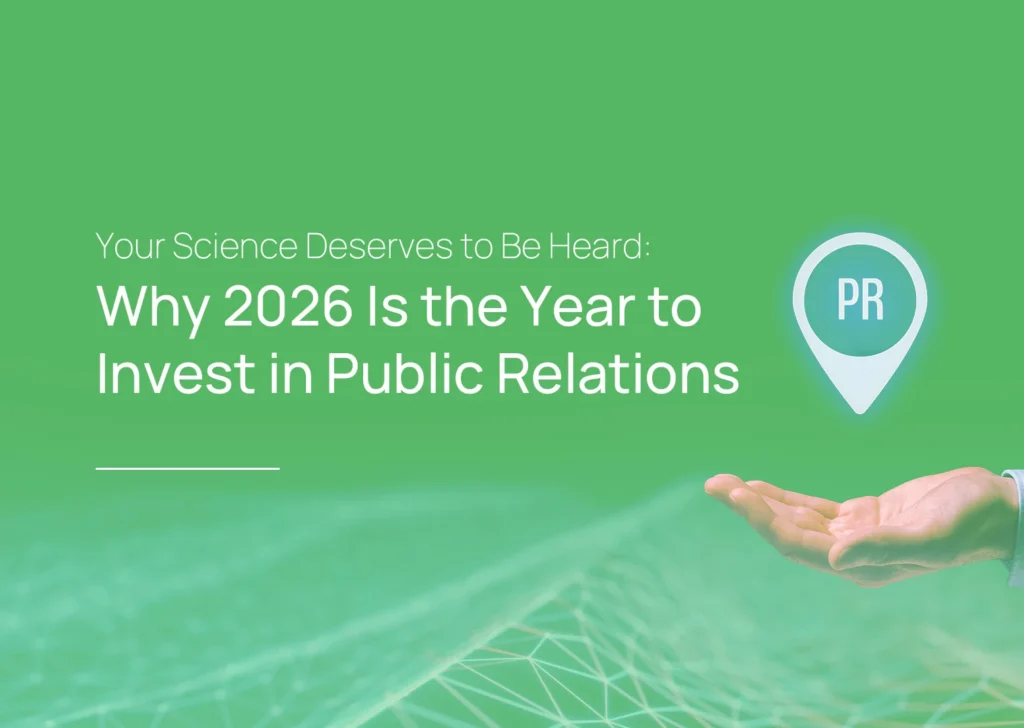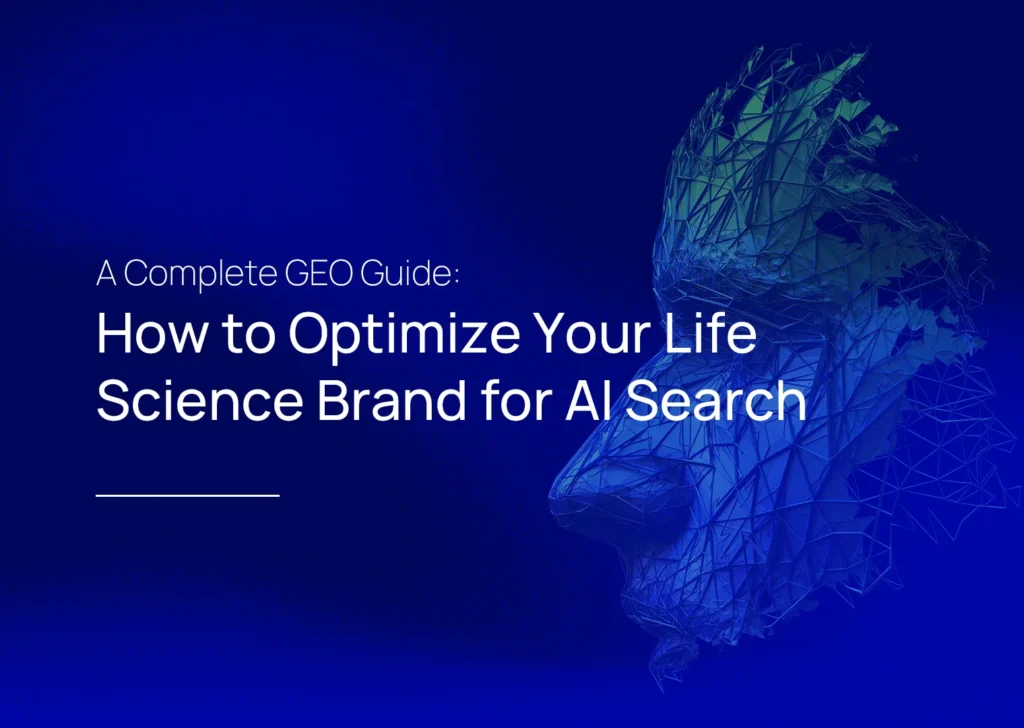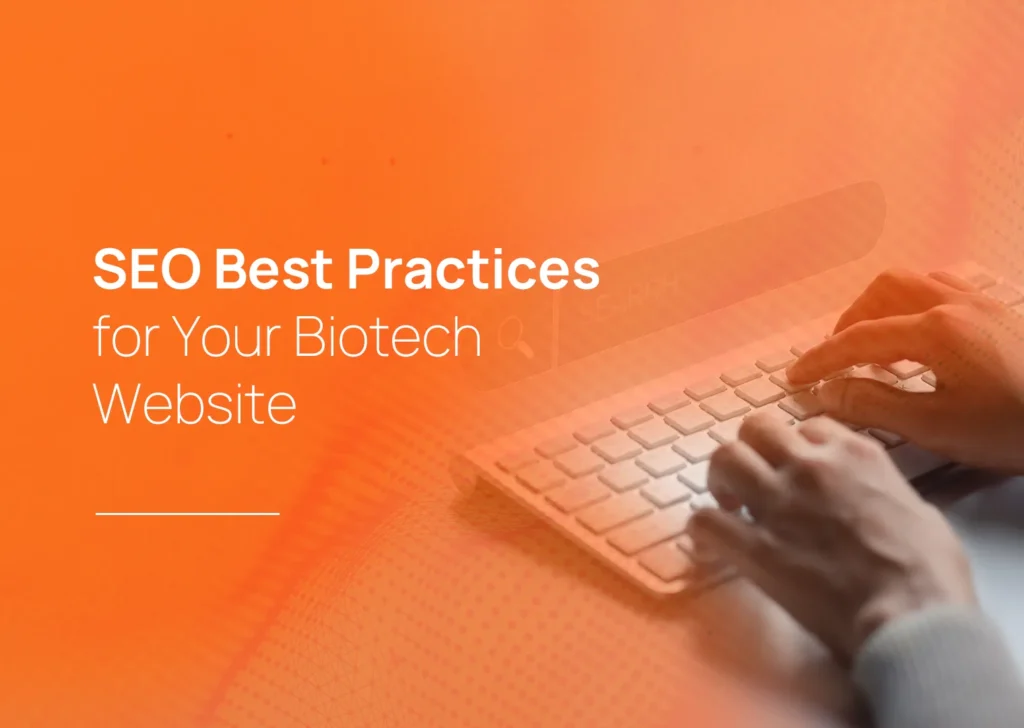Key takeaways:
- Traditional marketing approaches often fail to resonate with a scientific audience.
- Technical content must be high-quality and hold value to drive conversions.
- Find a balance between scientific rigor and accessibility when crafting your content to appeal to different stakeholders.
- Search engine optimization in the life sciences requires a specialized approach.
- Effective CTAs for scientists should respect their methodical approach to evaluation.
- Technical audiences are trained to be skeptical, so it’s important to build trust.
Creating content that both respects scientific rigor and drives conversions requires a fundamentally different approach than traditional marketing. After years of working with research teams, lab managers, and C-suite executives in the life sciences industry, we’ve discovered that the key lies not in dumbing down the science, but in making complex concepts accessible and compelling while maintaining the credibility that scientific audiences demand.
The Unique Landscape of Life Science Content Marketing
Marketing in the life sciences presents challenges that would make most traditional marketers’ heads spin. Our audiences aren’t just consumers, they’re PhD-level researchers, seasoned lab managers, and executives who’ve built their careers on evidence-based decision making. They can spot cliché marketing fluff from a mile away, and they’ll dismiss content that lacks scientific substance without a second thought.
Traditional marketing approaches often fall short in our sector because they rely on emotional triggers, such as a nostalgic commercial featuring a warm holiday gathering with snowflakes falling outside the frosted window, or a strong sense of urgency around limited time offers that will be gone before you know it. In biotech, purchasing decisions can take months or even years, involve multiple stakeholders, and require extensive validation. Tugging at your audience’s heartstrings won’t be substantial enough when they need to justify a $500,000 instrument purchase to their research committee.
Understanding Your Scientific Audience
The first mistake many biotech marketers make is treating scientists as objects, not people. In reality, we’re dealing with distinct personas, each with unique pain points and decision-making criteria. Below, we provide insights on a few unique audiences to consider.
Research Scientists
- Pain points: Time constraints, budget limitations, and the pressure to publish
- Considerations: They need tools and solutions that will solve their problems – producing reliable, reproducible results and help them with acquiring grant funding or meeting program milestones.
- Approach: Focus on how your solution solves their problems, accelerates discovery, improves data quality, or opens new research possibilities.
Lab Managers
- Pain points: Balancing operational and capital efficiency with scientific needs
- Considerations: They’re thinking about workflow optimization, cost per sample, training requirements, and equipment reliability.
- Approach: Emphasize operational benefits, total cost of ownership, return on investment (ROI), and ease of integration with existing workflows.
Biotech Executives
- Pain points: Slow time to market, challenges to meet investor milestones
- Considerations: They’re focused on speed, scalability, and competitive advantages.
- Approach: Connect scientific capabilities to business outcomes and demonstrate clear value and ROI.
Clinicians
- Pain points: Improving patient outcomes, integration into clinical settings and with existing protocols and infrastructure
- Considerations: They look for clinical evidence, regulatory approvals, cost per reportable, and reimbursement opportunities.
- Approach: Focus on improved outcomes for patients, solid data, and the value of integrating your solution into their workflows.
Understanding these different perspectives is essential for creating content that resonates. The most effective approach is to map content specifically to each persona’s journey and address their unique concerns at each stage of the conversion process, from awareness to purchase.
Content Types That Drive Scientific Conversions
Not all content is created equal in the life sciences. Certain formats are particularly effective at moving scientific audiences through the conversion funnel. Here are some of our favorites:
Technical White Papers
- Benefits: These documents allow you to dive deep into scientific principles, present original research, and demonstrate thought leadership.
- Tip: Make sure that your content includes value beyond product promotion – highlight your novel analytical methods or comparative studies, not just technical specs.
Case Studies
- Benefits: Showcasing real-world applications and quantifiable outcomes appeals to scientific minds and builds credibility.
- Tip: The most effective case studies include detailed methodology sections, statistical analysis of results, and honest discussions of limitations or challenges encountered.
Educational Webinars
- Benefits: Webinars allow you to reach a wide audience, showcase thought leadership, and create evergreen content to use across platforms.
- Tip: These sessions work best when they focus on solving common technical challenges rather than promoting a product.
Video Content
- Benefits: Video is great for explaining complex methodologies or demonstrating specific techniques.
- Tip: Short explainer videos can be used to make difficult concepts accessible, while longer-form content can be used for comprehensive training or a scientific deep dive.
In order for your content to be a conversion tool, it needs to hold value for your audience and meet them at their stage of the customer journey. Consider creating a progression from educational content to technical resources to consultation opportunities to nurture your leads through the funnel.
Balancing Scientific Rigor with Accessibility
One of the most challenging aspects of biotech content marketing is striking the right level of complexity for the intended audience. Go too basic, and you lose credibility with your scientific audience. Go too technical, and you might exclude the important decision-makers who lack deep scientific expertise.
The solution to getting the best of both worlds lies in layered content approaches. Start with clear, concise summaries that highlight key benefits and outcomes, then provide more detailed technical information for those who need it. This might mean including both executive summaries and detailed methodology sections or offering basic explainer content alongside advanced technical specifications.
Visual communication needs to be considered when dealing with complex scientific concepts, too. Well-designed diagrams, process flows, and data visualizations can make difficult concepts accessible without sacrificing accuracy – and they can be a great marketing tool to use across various platforms, from pitch decks to social media graphics.
Scientific storytelling is an often-overlooked approach that can dramatically improve engagement. Rather than simply presenting data or features, frame your content around the scientific challenges that your audience faces and their journey toward solutions. This narrative approach helps maintain engagement while respecting the logical, evidence-based thinking that characterizes scientific audiences.
SEO Strategies for Scientific Content
Search engine optimization in the life sciences requires a specialized approach. Scientific audiences use different search terms than general consumers, often including highly specific technical terminology, protocol names, and research methodologies.
Keywords for scientific content should include long-tail technical terms, methodology-specific phrases, and research-related queries. Leveraging negative keywords for search campaigns can also prove helpful, as your technical audience isn’t likely to be searching for things like, “What does CRISPR stand for?” or “Where can I get my DNA sequenced?”
Building authority in scientific SEO requires demonstrating genuine expertise through technical depth and expert contributions. Search engines reward content that provides comprehensive, authoritative information on complex topics. This means creating content that other researchers and websites want to reference and link to – and that naturally incorporates relevant search terms.
Crafting Effective CTAs for Scientific Audiences
Traditional marketing calls-to-action often fall flat with scientific audiences. Phrases like “Buy now!” or “Don’t miss out!” feel manipulative to people trained in evidence-based decision making. Instead, effective CTAs for scientists should respect their methodical approach to evaluation.
Value-driven offers work best with technical audiences. Rather than pushing for immediate sales, offer resources that help with their research or decision-making process. The language of scientific CTAs should reflect how researchers actually think and work to get them to convert. Instead of “Download now” or “Get your free trial,” try CTAs like:
- View technical specifications
- Evaluate our platform in your own lab
- Schedule a free demo
- Speak with scientific experts
These subtle changes in language can significantly improve conversion rates by aligning with scientific communication norms.
Building Trust Through Scientific Content
Trust is fundamental in life science marketing. Scientific audiences have been trained to be skeptical, to demand evidence, and to verify claims. Building trust through content requires unwavering commitment to accuracy and transparency, even if it might not seem “exciting.”
Every claim in your content should be supported by credible evidence. This means including proper citations, referencing peer-reviewed research, and being transparent about limitations or assumptions.
Leveraging scientific expertise and credentials is also influential. Content authored or reviewed by recognized experts carries significantly more weight than generic marketing materials. For the best impact, collaborate with key opinion leaders, feature contributions from your scientific team, and ensure that technical content is reviewed by qualified experts.
Peer testimonials and validation can also be incredibly powerful, but they must be authentic and verifiable. Scientists trust the opinions of their peers more than broad marketing claims. Case studies featuring respected researchers or institutions, peer-reviewed publications citing your work, and presentations at major scientific conferences all contribute to building trust and credibility.
Conclusion
The key to success in life science content marketing is never forgetting that you’re communicating with some of the most educated and analytically-minded professionals in the world. Respect their intelligence, provide genuine value, and maintain unwavering commitment to accuracy and transparency. When you do this consistently, compelling content that converts becomes not just possible, but inevitable.
Scientific audiences want to make good decisions based on evidence. Your job as a marketer in the biotech and life science industry is to provide that evidence in ways that are accessible, engaging, and action-oriented. Master this balance, and you’ll find that scientific rigor and marketing effectiveness aren’t opposing forces – they’re complementary strengths that can drive exceptional results.
Are you looking to improve your content marketing strategy to increase conversions? Our team of experts is ready to help. Let’s connect.





